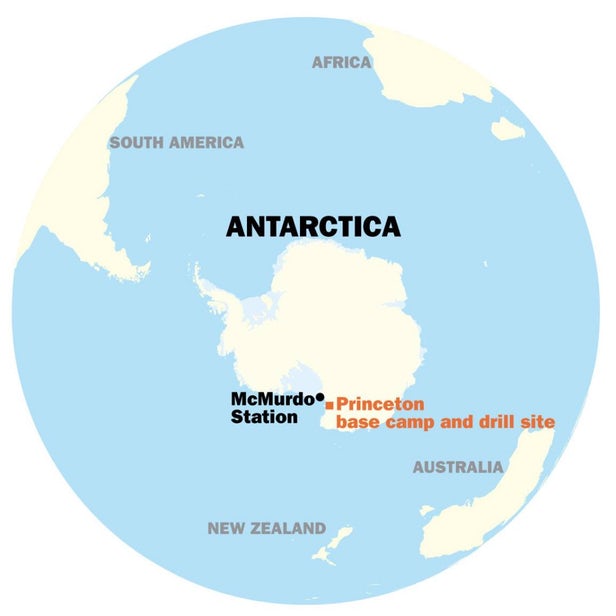Oldest ice-core ever drilled dates back 2.7 million years

Discovering a new way to age ancient blue ice samples, a team from Princeton is uncovering some of the oldest ice core samples ever found (Credit: Yuzhen Yan, Department of Geosciences)
Scientists working in the Allen Hills region of Antarctica have drilled the oldest ice core ever. Dating back an estimated 2.7 million years, this ice sample is more than 1.5 million years older than any other previously recovered and the data garnered from the sample offers a rich insight into the climate of the planet millions of years ago.
Up until recently, scientists faced a problem finding extremely old ice core samples. Heat from the Earth's core tends to melt the super deep layers of ice over time, and the oldest ice core scientists thought they were able to harvest was around 800,000 years old.
A few years ago, a team at Princeton investigated a new method for drilling ancient ice. The focus was a remote region of Antarctica where ancient ice could be found much closer to the surface. Known as "blue ice" areas, these regions contain ice not layered by age, but rather, hold rocky ridges of ancient ice created due to a unique wind-swept geography.
The big challenge scientists initially faced was dating the ice. Generally, ice cores could be dated by simply counting the annual build up of layers, but these ice cores lacked that traditional identifier. A geochemist on the team solved that problem by discovering a way to date the ice through analyzing the trace amounts of argon and potassium it held. The method isn't as precise as other techniques, but the ice can be confidently aged to within a window of 100,000 years.
The first core the team drilled several years ago revealed ice from around 1 million years ago at a depth of 128 m (420 ft). Upon returning in early 2016, the team gathered several more deeper ice core samples, including one as deep as 205 m (672 ft).
After extensive study the team has now revealed at the Goldschmidt Conference in Paris that some of the ice harvested has been aged at 2.7 million years old. Tiny air bubbles found in the ancient ice offers us an invaluable insight into the direct composition of the atmosphere at a starkly different time in our planet's history.
The discovery has revealed that 2.7 million years ago, atmospheric carbon dioxide levels were less than 300 parts per million. This is slightly lower than some other fossil records have previously indicated, and some climate scientists have theorized that this low level of atmospheric CO2 could have been the trigger for subsequent ice ages. In comparison, our globe recently officially passed the threshold of 400 parts per million for the first time in 3.6 million years.
The most exciting part of the research is the prospect of discovering even older ice samples. The team hopes to return to the blue ice and drill samples possibly up to 5 million years old. These samples would give a fascinating insight into a period on the planet when carbon dioxide levels resembled that of today, allowing for even more confident correlations between climate patterns and atmospheric carbon dioxide levels.
The team's new findings were presented at the Goldschmidt Conference in Paris.


